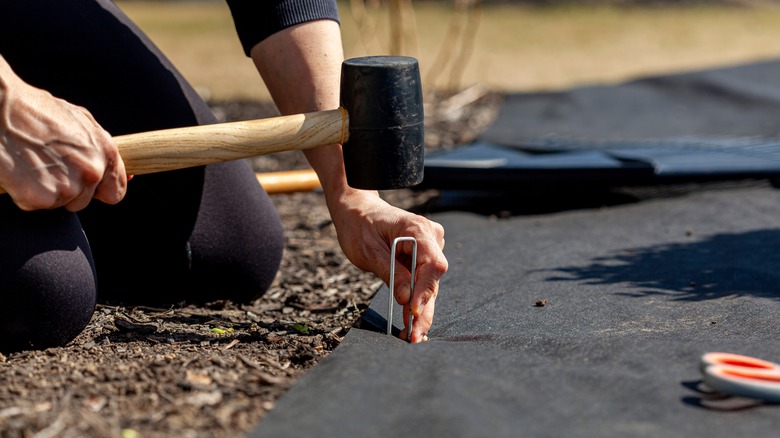Like many naive gardeners before you, you had the seemingly brilliant idea of growing your own organic mint in the garden to harvest and make delicious mint tea — but now the mint has completely taken over and bullied all of your other plants right out of the garden! This is a common gardening mistake. Mint is notoriously challenging to get rid of or contain. The only effective way to control its growth is to avoid planting it directly in the ground, or try to limit the root spread by planting it in large bottomless buckets that are partially buried in the soil to prevent roots from climbing over the rims.
Mint spreads so vigorously because it grows from runners that spread like wildfire underneath the ground. These roots, or rhizomes, can grow up to 3 feet in length, with new shoots being sent out every few inches. Pulling up all of your mint from the garden and dumping it on the compost heap is futile, you’ll only be helping to spread it further as it’ll take root in the compost heap and the problem will start all over again. And, if you have had the misfortune to let your mint go to seed, well, who knows where the seeds have landed in your garden! Many gardeners have resorted to commercial herbicides designed to kill weeds. However, with some patience and tenacity, it is possible to reclaim your garden and get mint under control.
How to kill invasive mint in your garden

If your mint has become particularly invasive and you want the nightmare to be over, killing the plant off may seem like the easiest solution. Mint isn’t an easy plant to kill though, so don’t expect it to disappear overnight. The secret is patience.
Your first option is to dig up the plant. You’ll have to be absolutely meticulous and make sure you dig up every last trace of the plant. Even a small piece of the plant left behind, be it a bit of root or even just a stem, will probably regrow, and before you know it, you’ll have mint sprouting up out of the ground again. You may have keep a close eye on the patch and re-dig a few more times before you get every trace of the mint up.
Alternatively, you can smother it. To do this, a barrier is used to block sunlight so that the mint cannot grow. Just place landscape fabric or plastic sheeting on top of the mint and then cover it with a few inches of mulch. DIY methods may also be effective, for example, pouring boiling water over the plant. Similarly, you will have to keep an eye on the patch and repeat the process a few times until all of the mint has been killed off. And we’ve already mentioned herbicides, which are highly effective, but may be a preferred last resort.
How to grow mint without letting it take over the garden
If you still want to grow a patch of mint in your garden the safest way to do so is by using containers or raised flower beds dedicated to your mint varieties. If you’re eager to plant in the ground alongside other plants though, definitely consider using bottomless buckets or pots to prevent the roots from running and the plant from spreading.
Catherine Morovec describes how to keep mint from spreading in her YouTube video above. She uses a nursery pot with the bottom cut out to demonstrate how she plants mint to constrain its growth. To use this method, you’ll need to dig a large hole to the bottom of your garden bed and place a bottomless container. Plant the mint inside the pot with the leaves above the surface as normal, and then fill in all the gaps around and inside the pot with soil until only the rim of the container is visible.
Lightly cover the rim with some of the earth just so that it isn’t visible anymore, but not so deep as to let the roots grow up and over the top. Now you can safely plant other plants around your little mint patch.



